Content Blocks
The Wawel Royal Castle
The Wawel Royal Castle with the Wawel Hill is one of the places of the greatest historical and cultural importance in Poland. The centuries-old seat of kings and a symbol of Polish statehood, in 1930 the Castle also became one of the most important museums in the country, housing a valuable collection of paintings, graphics, sculptures, fabrics, goldsmith's products, militaria, porcelain and furniture. The chambers exhibit the famous tapestries of Zygmunt August and magnificent Renaissance Italian paintings from the Lanckoroński collection, and the Wawel collections of eastern art include an excellent and the largest collection of tents in Europe. Wawel Royal Castle is a historic museum residence.
Source: https://wawel.krakow.pl/
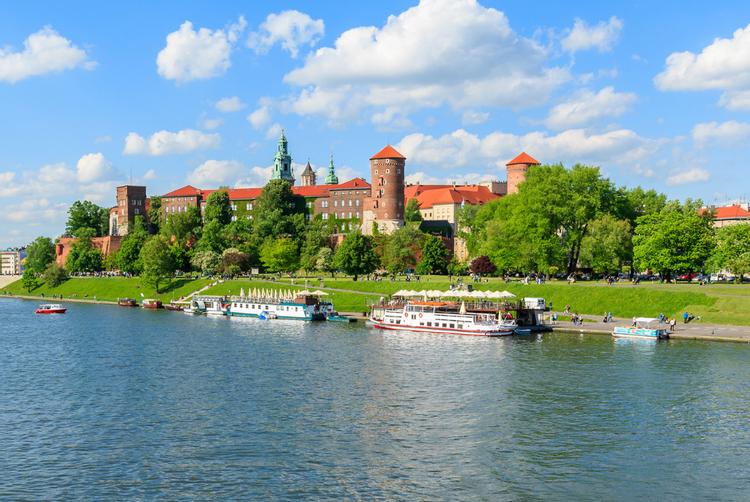
The Basilica of Corpus Christ
For 600 years, the Order of Regular Lateran Canons has been present in the Kazimierz district of Krakow. The Corpus Christi Church, which was its seat, was elevated to the rank of Minor Basilica. In 1335, King Casimir the Great located a city near Krakow, which he named after him. The then Kazimierz was like an island, surrounded by the waters of the Vistula and Wilga. As in every town that was founded at that time, there had to be a market square with a town hall and an adjoining church, which was to serve as the main parish church for the town. This church was called Corpus Christi, and the first records about the parish under this invocation appear in the documents of the Holy See as early as 1343.
Source: http://www.bozecialo.net/index.php/bazylika/historia-bazyliki
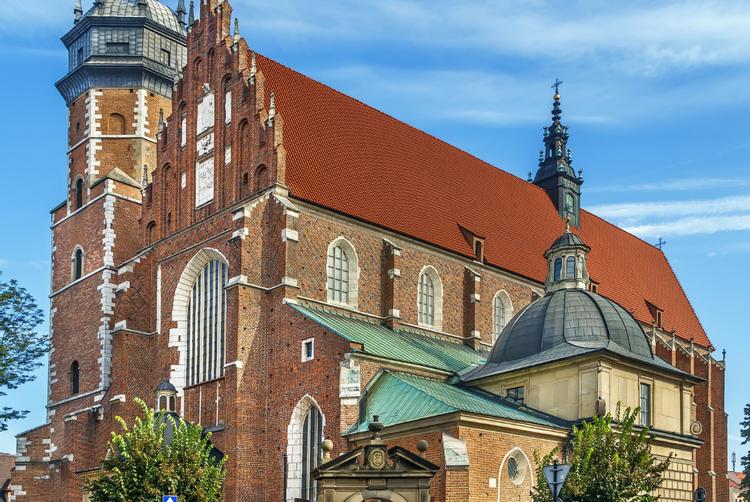
Plac Nowy
Plac Nowy is one of the most original fairgrounds in Poland, and perhaps in Europe as well. It is characterized by a unique atmosphere of historic buildings with the central point of reference, the so-called "Okrąglak". Especially in the last two decades, it has become a very recognizable part of Krakow, visited by tourists from all over the world. On Plac Nowy, agricultural produce, food and industrial products are traded and the so-called thematic fairs, such as antiques fairs, "real products" fairs, local design fairs, clothing fairs, pigeons and small ornamental fowls. Artistic events are also organized in the Targowisko area. A traditional flea market takes place here from Monday to Saturday, while on Sunday the Square turns into a great clothing market. The morning hours on Fridays belong to pigeon enthusiasts who will surely find something for themselves.
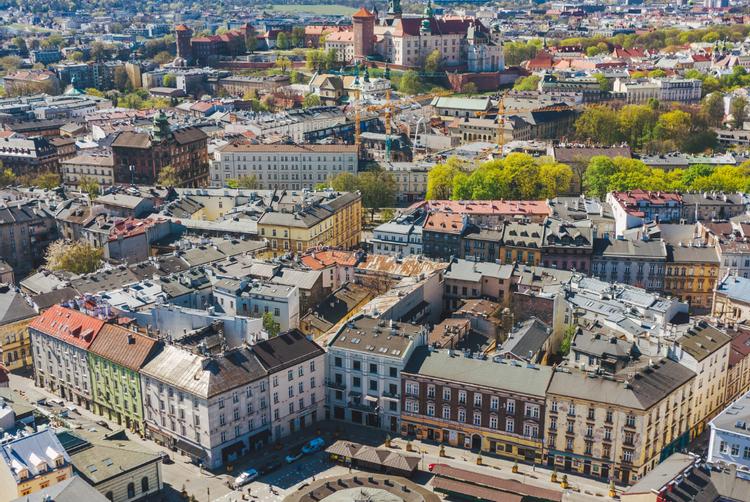
New Jewish cemetery
The cemetery covers the area of 19 hectares. There is a brick funeral hall there. It is estimated that there are over 10,000 tombstones. There are old, original tombstones (the oldest one comes from 1809). Much comes from the 1840s. They have the traditional form of semicircular matzevot, covered with Hebrew inscriptions and decorated with typical Jewish tombstones. In the second half of the 19th century, German and Polish-language tombstone epitaphs appeared, a visible sign of the changes taking place among Krakow Jews.
Source: https://sztetl.org.pl/pl
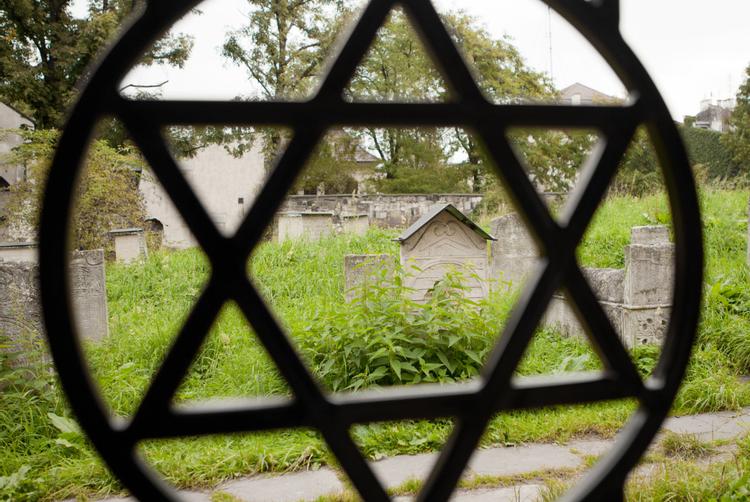
Synagoga Tempel
It is located on the corner property at Miodowa and Podbrzezie Streets. The building was built in the years 1860-1862, it is eclectic; neo-renaissance with elements in the Moorish style. On the richly decorated facade, above the main entrance, there are tablets of the Decalogue, made of black marble. On the façade and side walls there are two-part arcaded windows with unique colored stained glass windows from the turn of the 19th and 20th centuries. Wall paintings composed of plant motifs are oriental in character. The ceiling of the main prayer hall of the synagogue and the balustrades of the gallery for women are decorated with colorful and gilded stylized patterns. In the center of the main hall there is a bimah and on the landing near the eastern wall there is a monumental Aron Kodesh made of white marble, surrounded by a columned balustrade, topped with a large golden hemisphere covered with a crown.
Source: https://gwzkrakow.pl/
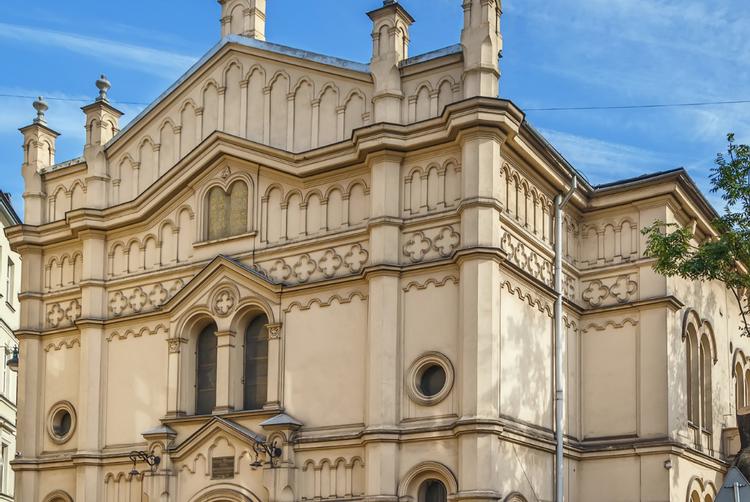
Crypt of Merit on Skałka
Crypt of Merit on Skałka (Pantheon of Merit, Tombs of Meritorious Poles, Sepulcrum Patriae, also known as the Great Poles' Cemetery) - a crypt located in the basement of the Pauline Church in Skałka in Krakow. It was established in 1880 according to the design of prof. Józef Łepkowski from 1876. On the arch there is a Latin inscription credo, quod Redemptor meus vivit ("I believe that my Redeemer lives").
Source: http://www.skalka.paulini.pl
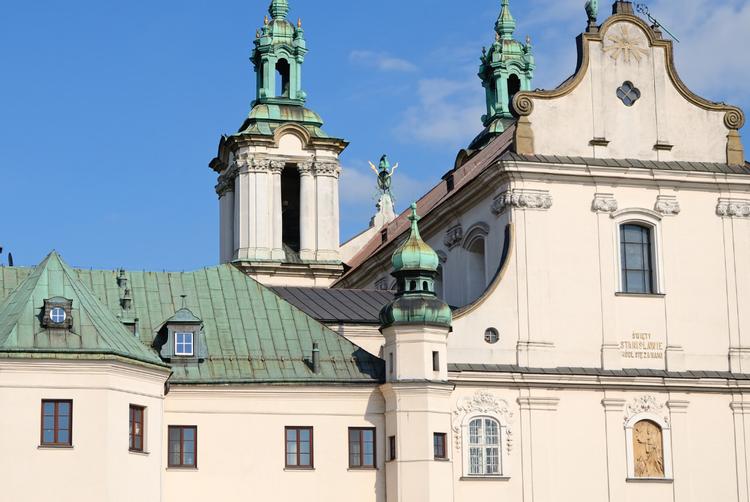
Kopiec Krakusa
The Krakus Mound is located at an altitude of 271 meters above sea level, 2400 meters from the Wawel Castle. Its height from the base is 16 meters. The great importance of the Mound is evidenced by the fact that the windows of the Hall of Deputies in the Wawel Castle are located in such a way that the kings, when making the most important decisions, could see the Mound in front of them, reminding them of the greatness of their predecessor's merits.
What Krak looked like, the legendary, righteous ruler, founder of Krakow, can be seen in a sculpture by Franciszek Kalfas from 1929, located in the courtyard of the State Archives at Sienna 16 Str. The easiest way to get to the Mound is from the intersection of Powstańców Śląskich and Wielicka, along the old Podgórze cemetery, and then via a footbridge or along Robotnicza Street, and then by stairs to Avenue under the Mound.
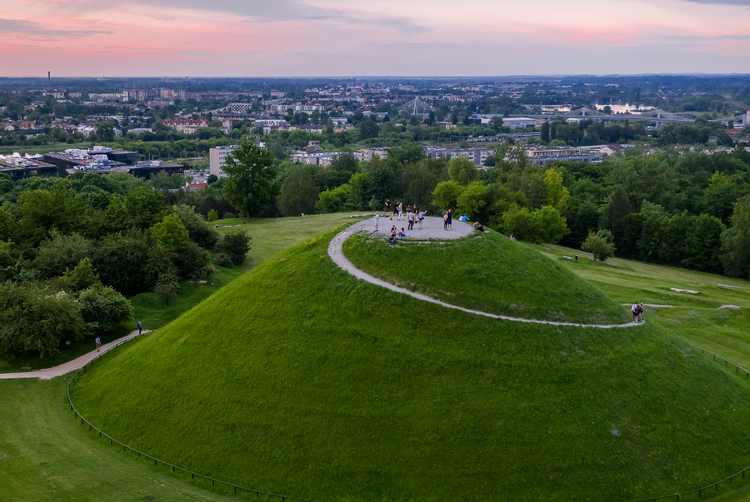
Schindler's Factory
A branch of the Historical Museum of the City of Kraków, Oskar Schindler's Enamel Factory is located in Kraków's Zabłocie, in the administrative building of the former enamelware factory known as Oskar Schindler's Deutsche Emailwarenfabrik (DEF). Before DEF, the First Malopolska Factory of Enamelware and Tin Products "Record" operated here, established in March 1937.
On January 15, 1940, on the basis of an agreement with the receiver, Schindler leased factory buildings at Lipowa 4 and Romanowicza 9 Str. In 2005, the site of the former plant became the property of the city of Krakow. After numerous discussions and debates, with the participation of representatives of many circles, concerning the purpose of the site of the former Oskar Schindler factory, in 2007 the concept of its division between two cultural institutions was adopted. In the administrative building, a project developed by the Historical Museum of the City of Kraków was implemented, assuming the creation of an exhibition about the fate of the city and its inhabitants during the German occupation (1939–1945).
Source: https://muzeumkrakowa.pl/oddzialy/fabryka-emalia-oskara-schindlera
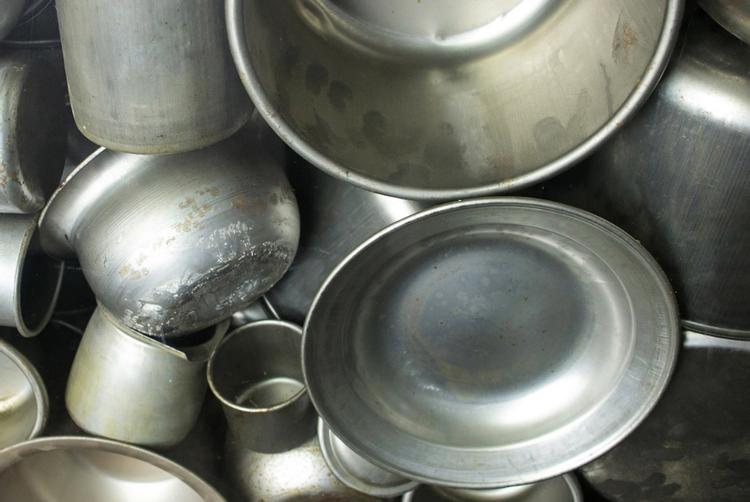
Benedictine Abbey in Tyniec
The Benedictine Abbey of Saints Peter and Paul in Tyniec was founded by Casimir the Restorer in 1044. The Benedictines refer to the person of Saint Benedict of Norcia, who decided to become a hermit in his youth. After a period of solitary life, he became the superior of the monk community near his hermitage. However, they did not want to meet his requirements: they decided to poison him, but the chalice with poisoned wine fell apart when St. Benedict made a gesture of blessing over him. The Saint left that monastery to found a new one, on the top of Monte Cassino, where the abbey, which has been ruined many times, is still standing today. Today the various orders living according to the Rule have their monasteries beyond the Arctic Circle and in New Zealand; in the Far East and tropical Africa. That is why the Saint of Norcia is called the Patriarch of Monks: all these houses are linked by the Benedictine Rule and by a special constancy: monks who enter particular monasteries usually spend their entire lives there.
Source: http://opactwotynieckie.pl/opactwo-historia-benedyktynow-w-polsce/zycie-benedyktynskie-dzis/

Special offers

SAFE OFFER

STANDARD OFFER




